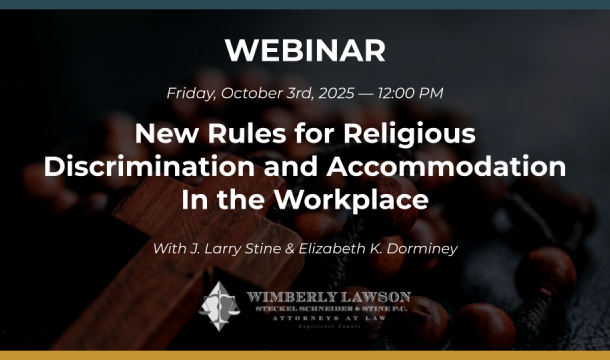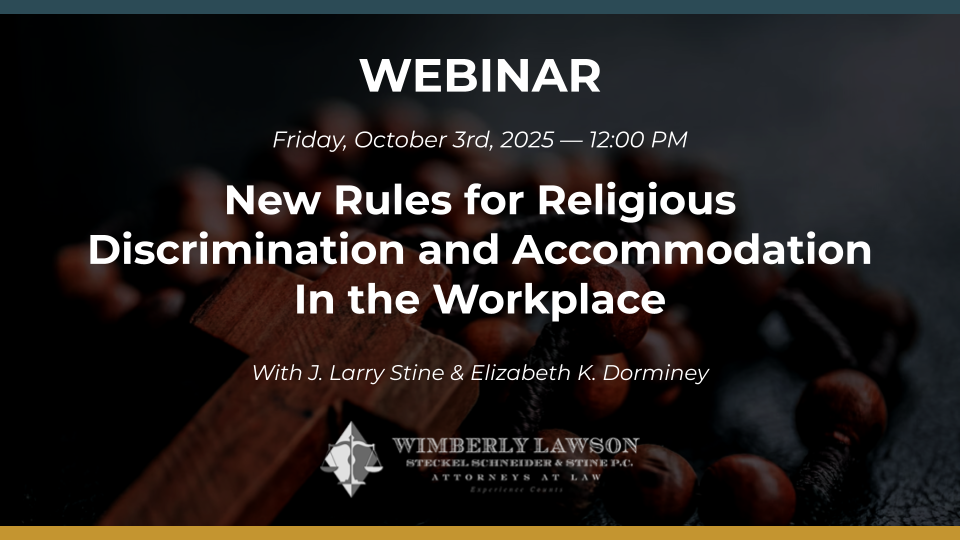EEOC Issues Updated Guidance on National Origin Discrimination
Last week, the EEOC issued new guidance on national origin discrimination in the workplace. This new guidance did not draw a lot of publicity, probably due to the holiday week and the bigger news story involving the injunction of the Department of Labor's overtime rule. Nevertheless, this new guidance updates previous guidance that was issued back in 2002. The guidance addresses court decisions since 2002 that affect national origin bias and discusses topics including job segregation, human trafficking and "intersectional" discrimination, which refers to cases in which national origin bias occurs along with race discrimination, sex discrimination or another type of unlawful bias.
The EEOC issued a document entitled "Questions and Answers: Enforcement Guidance on National Origin Discrimination," as well as a Small Business Fact Sheet, which is also presented in a question and answer format, to accompany the new guidance. One of the important issues addressed by the guidance as these documents is the distinction between discrimination on the basis of national origin as opposed to citizenship of immigration status:
2. What is national origin discrimination under Title VII?
National origin discrimination means discrimination because an individual (or his or her ancestors) is from a certain place or shares the physical, cultural, or language characteristics of a national origin (ethnic) group.
•An individual's place of origin may be a country (such as Mexico), a former country (such as Yugoslavia), or a place that is closely associated with an ethnic group but is not a country (such as Kurdistan).
•A national origin group is a group of people who share a common language, culture, ancestry, and/or other social characteristics (such as Hispanics/Latinos or Arabs).
•National origin does not refer to citizenship or immigration status.
The guidance also notes the overlap between national origin discrimination and discrimination based upon other protected characteristics, such as race, color, or religion:
7. Can applicants or employees allege Title VII employment discrimination based on national origin and another basis, such as race, color, religion, or sex?
Yes. In fact, national origin discrimination often overlaps with other forms of discrimination, such as race, color, or religious discrimination.
A person also could challenge discrimination based on a combination of protected characteristics that are inseparable (often referred to as intersectional discrimination). For example, Title VII prohibits discrimination against an employee because she is an Asian woman, even if the employer has not also discriminated against Asian men or non-Asian women.
This guidance does not have the force of law; it is intended to assist agency employees enforcing Title VII of the 1964 Civil Rights Act as well as instruct employers, workers and other parties subject to Title VII. However, courts often look to the EEOC and its publications for direction on legal issues that fall within the EEOC's enforcement jurisdiction.

Kathleen J. Jennings is a former principal in the Atlanta office of Wimberly, Lawson, Steckel, Schneider, & Stine, P.C. She defends employers in employment matters, such as sexual harassment, discrimination, Wage and Hour, OSHA, restrictive covenants, and other employment litigation and provides training and counseling to employers in employment matters.
Related Content
Get Email Updates
Recent Content

Trump Nominates Appointments to NLRB and EEOC but Policy Changes Likely to Be Delayed

DOL Launches Self-Audit Programs Designed to Help Employers Improve Compliance

DOL Must Release EEO-1 Reports to the Public under Open Records Laws

Current Advice on Active-Shooter Situations

New Policy for Federal Workers and Religious Expressions

